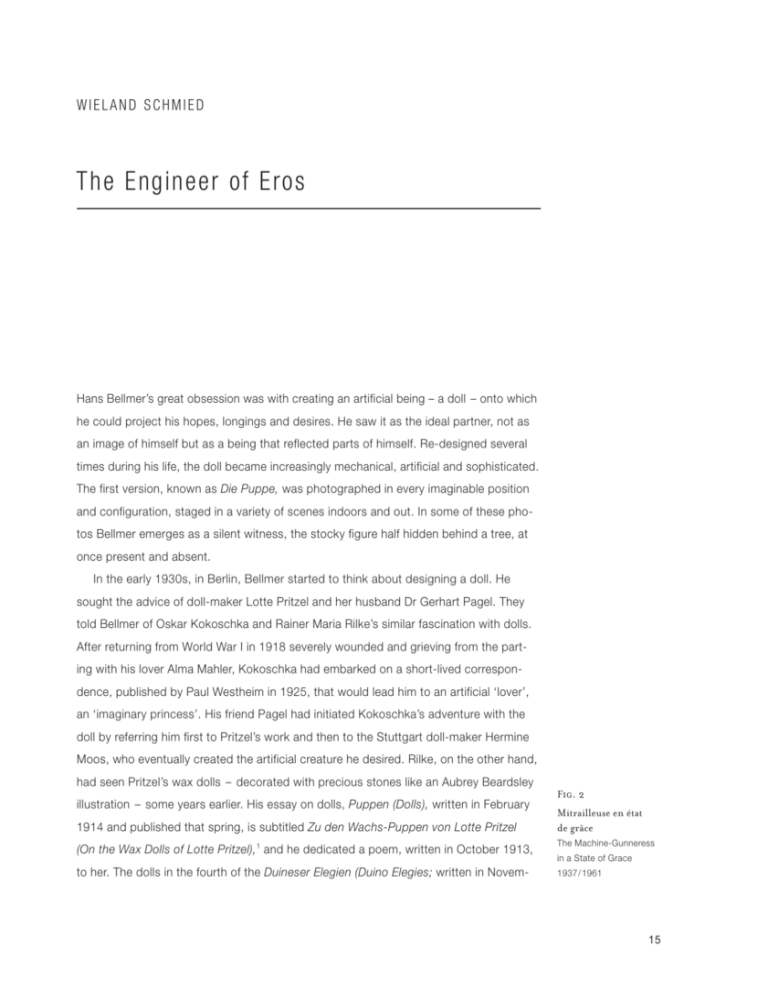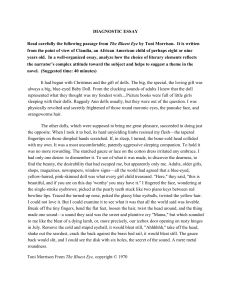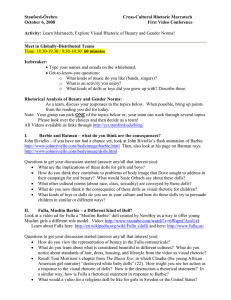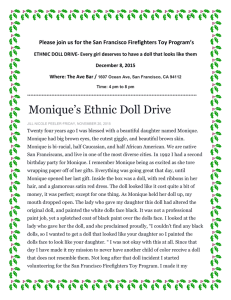The Engineer of Eros
advertisement

WIELAND SCHMIED The Engineer of Eros Hans Bellmer’s great obsession was with creating an artificial being – a doll – onto which he could project his hopes, longings and desires. He saw it as the ideal partner, not as an image of himself but as a being that reflected parts of himself. Re-designed several times during his life, the doll became increasingly mechanical, artificial and sophisticated. The first version, known as Die Puppe, was photographed in every imaginable position and configuration, staged in a variety of scenes indoors and out. In some of these photos Bellmer emerges as a silent witness, the stocky figure half hidden behind a tree, at once present and absent. In the early 1930s, in Berlin, Bellmer started to think about designing a doll. He sought the advice of doll-maker Lotte Pritzel and her husband Dr Gerhart Pagel. They told Bellmer of Oskar Kokoschka and Rainer Maria Rilke’s similar fascination with dolls. After returning from World War I in 1918 severely wounded and grieving from the parting with his lover Alma Mahler, Kokoschka had embarked on a short-lived correspondence, published by Paul Westheim in 1925, that would lead him to an artificial ‘lover’, an ‘imaginary princess’. His friend Pagel had initiated Kokoschka’s adventure with the doll by referring him first to Pritzel’s work and then to the Stuttgart doll-maker Hermine Moos, who eventually created the artificial creature he desired. Rilke, on the other hand, had seen Pritzel’s wax dolls – decorated with precious stones like an Aubrey Beardsley Fig. 2 illustration – some years earlier. His essay on dolls, Puppen (Dolls), written in February 1914 and published that spring, is subtitled Zu den Wachs-Puppen von Lotte Pritzel Mitrailleuse en état de grâce (On the Wax Dolls of Lotte Pritzel), 1 and he dedicated a poem, written in October 1913, The Machine-Gunneress to her. The dolls in the fourth of the Duineser Elegien (Duino Elegies; written in Novem- 1937/1961 in a State of Grace 15











